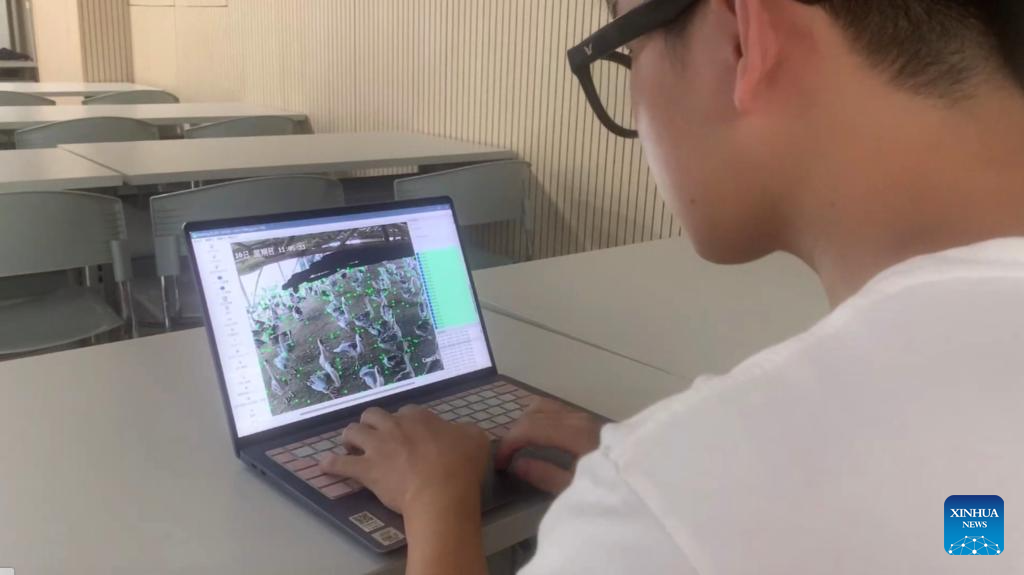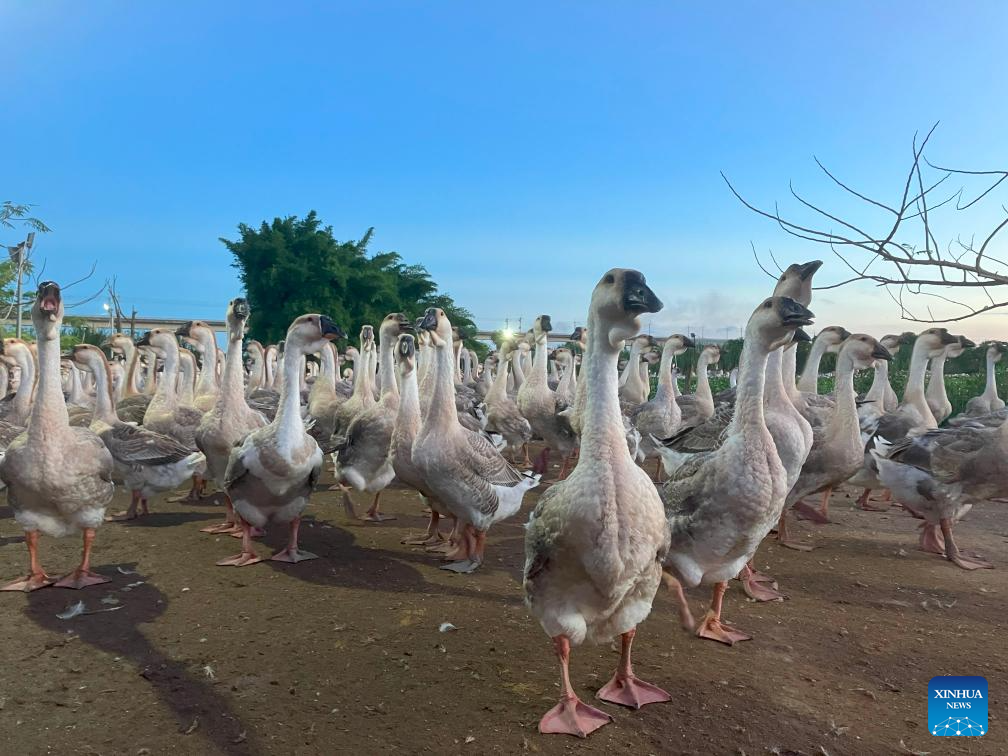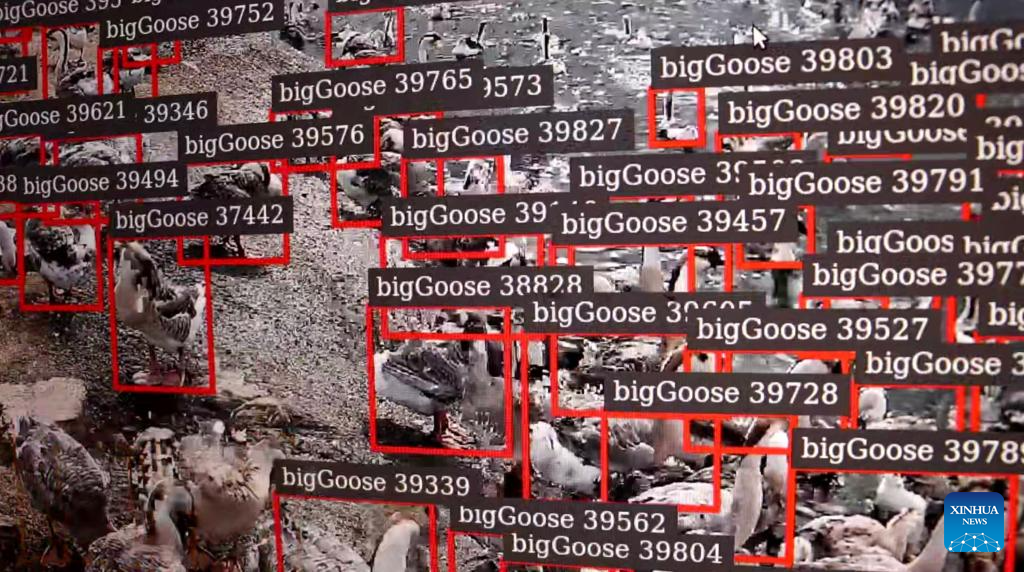
This undated file photo shows a student from Shenzhen University-Tencent cloud AI BEng program developing an AI goose-breeding program at Shenzhen Univeristy, south China's Guangdong Province. (Xinhua)
A team of 16 college students from Shenzhen University has developed an artificial intelligence (AI) program that helps identify sick lion-head geese for breeders, increasing the survival rate of the gaggle by 30 percent.
Lion-head geese are a primary ingredient in making local marinated goose dishes in the Chaoshan area of south China's Guangdong Province, which are renowned for their good quality but quite hard to raise.
For over 300 years, breeders in Chenghai District, Shantou City, relied on their experience to judge the health of geese by observing if they remained still for too long and by feeling their body temperature with their hands.
While the rule of thumb is effective, it is not efficient enough in emergency situations. Diseases could devastate a farm of over a thousand geese in as little as ten days. In the winter of 2018, an unexpected outbreak of avian influenza swept through Houxi Village, leaving only five out of thousands of lion-head geese alive.
As a young entrepreneur returning to his hometown, Jin Shutao, a professional goose farmer in Houxi Village, Chenghai District, thought about harnessing the power of technology.
In 2022, he invited 16 students from Shenzhen University-Tencent cloud AI BEng program to his lion-head goose farming cooperative. With guidance from teachers at the university and engineers from Chinese internet giant Tencent, they aimed to tackle this hard problem.
In a 500-square-meter space with over 4,000 geese closely packed together, the team faced the challenge of identifying sick geese amidst the cacophonous sounds. They decided to determine sickness by measuring the duration of a goose's stillness, and they divided the project into four groups, namely hardware, frontend, backend, and algorithm.
However, the first challenge they met was to install cameras because traditional QR code-based recognition methods for animals, such as cows, sheep, or pigs, did not work for geese. To collect enough data for AI training, the students used existing farm cameras to capture images and manually label them.
This labeling process involved categorizing and tagging 6,000 images of 300,000 geese. The arduous work was necessary to realize the level of detail and precision required for AI work. They needed to be 100 percent focused since even a slight error could affect the AI's training results, said Wang Yifeng, one of the team members.
Moreover, they had to continuously optimize the algorithm, as different scenarios could impact accuracy. Under the guidance of Tencent engineers, they first improved the recognition algorithm to improve the identification rate of lion-head geese in crowded scenes. Then, they optimized the tracking algorithm to record the duration each goose spent in one spot, helping identify any anomalies.
After dozens of model adjustments, the students learned that there is no one-size-fits-all algorithm. It must be customized based on specific conditions.
As they worked, they got more acquainted with the geese. They discovered that it was challenging to measure the body temperature of adult lion-head geese due to their thick feathers. Therefore, they turned to identifying feverish baby geese as supplementary means.
Some students even found through research that goose diseases were closely related to weather conditions such as typhoons and haze. Therefore, they added data observation and analysis functions to the program for optimization.
Through more than a hundred days and nights and countless online meetings, the AI goose program was continually updated.
Currently, the program provides real-time alerts for "listless geese" and "feverish geese," displaying temperature, humidity, PM2.5 levels, and trends in data changes on the farm. This has helped the farm increase the survival rate of lion-head geese by 30 percent.
"Developing AI isn't about sitting in an air-conditioned room and writing code. It's about learning to write code in 'goose dung,'" said Shen Linlin, director of the visual research institute under Shenzhen University.

Lion-head geese are seen at a farm in Houxi Village of Chenghai District, Shantou, south China's Guangdong Province, July 8, 2022. (Xinhua)

This photo taken on July 8, 2022 shows a goose farm in Houxi Village of Chenghai District, Shantou, south China's Guangdong Province. (Xinhua)

This undated file photo shows the interface of an AI-powered goose-breeding program developed by students from Shenzhen University-Tencent cloud AI BEng program. (Xinhua)
Category
AI Program Developed by Students Benefits Goose Farm
Contributor
AI Program Developed by Students Benefits Goose Farm
Country
Technical Solution

